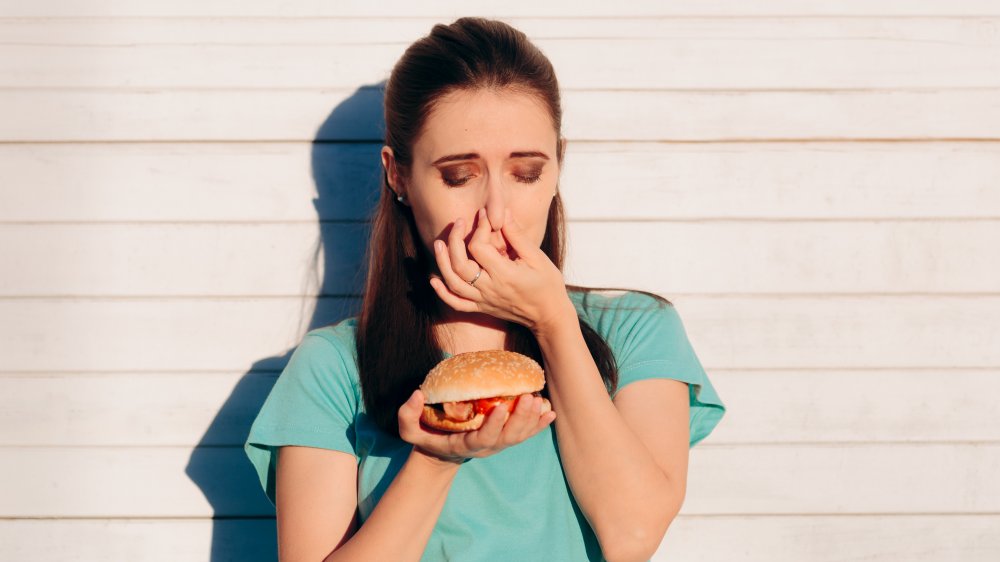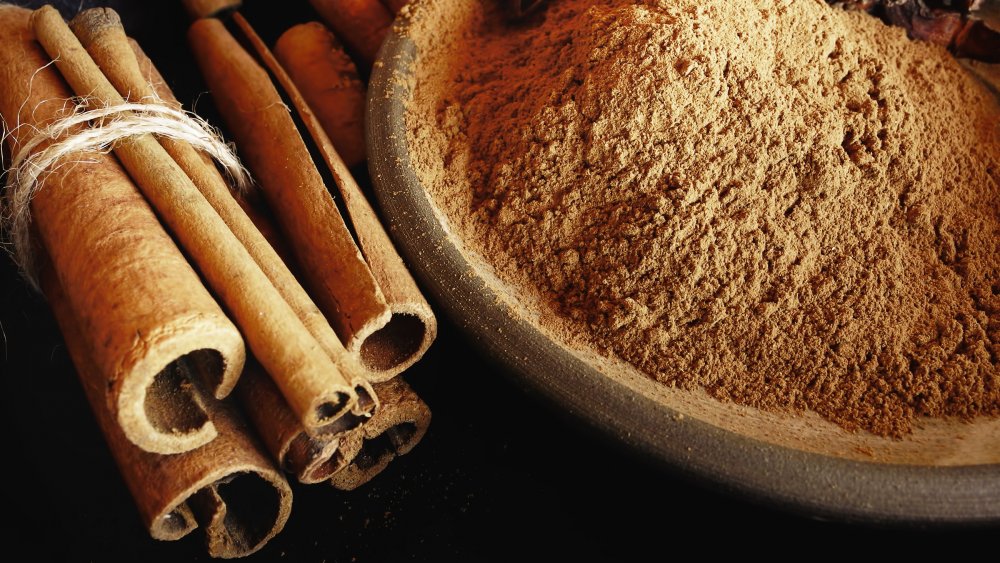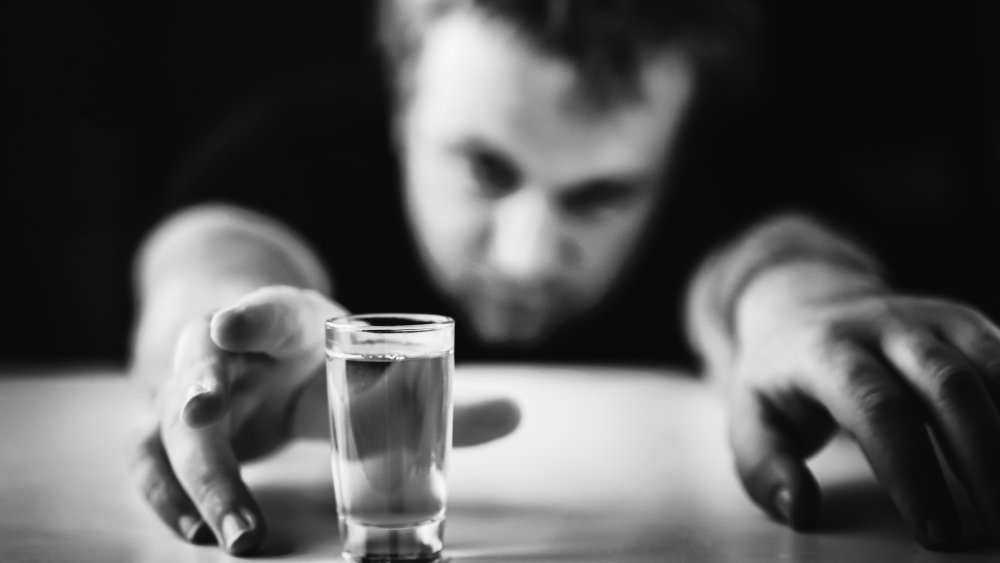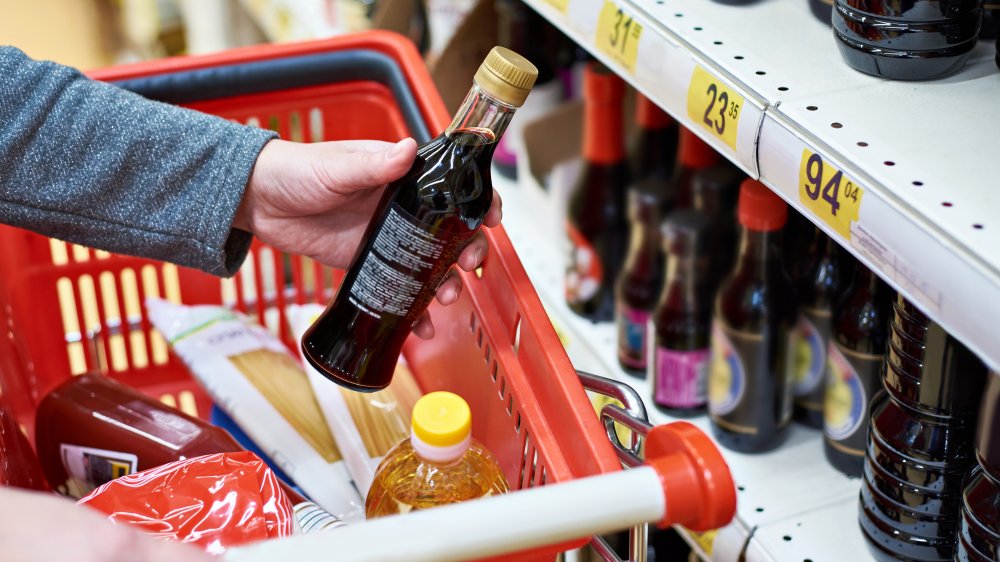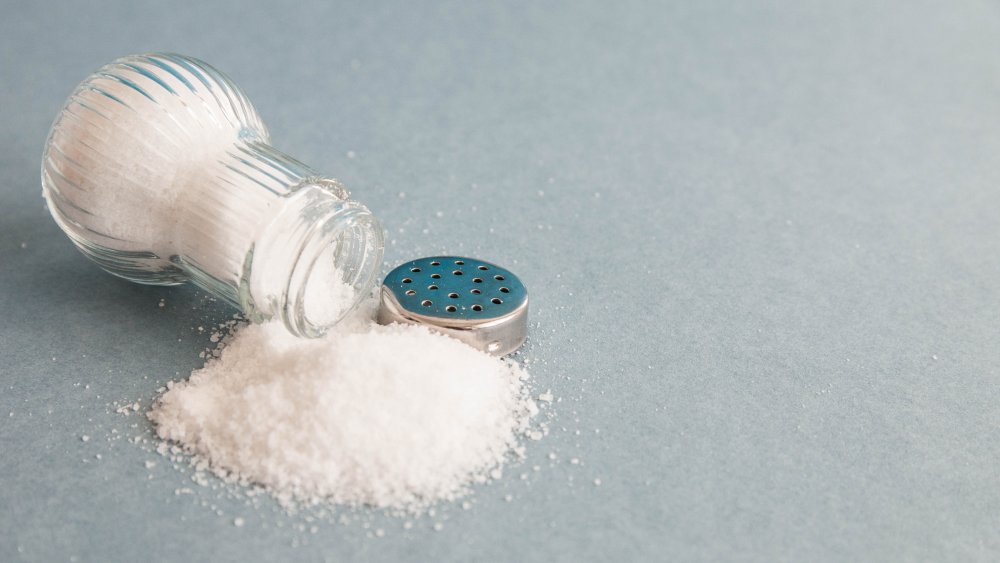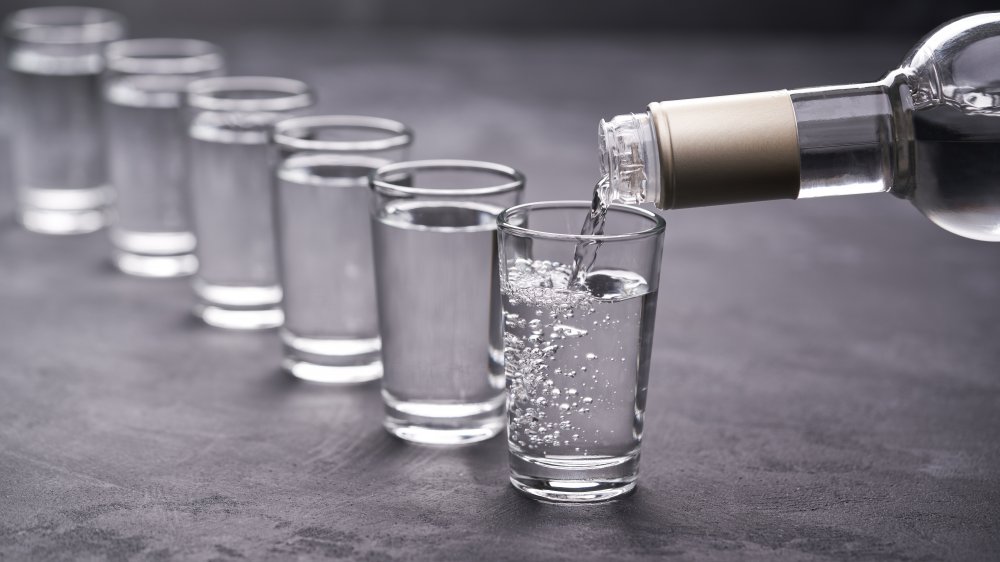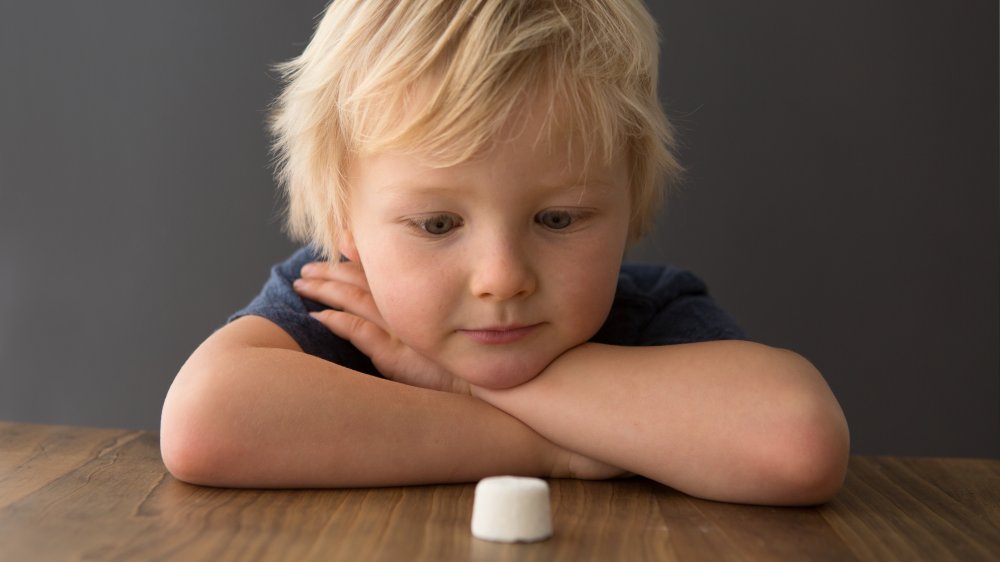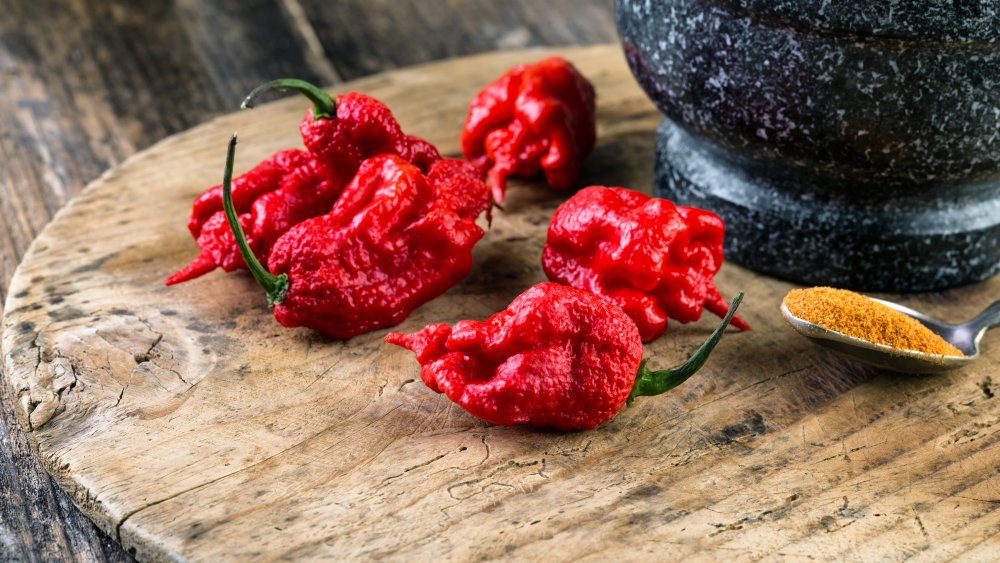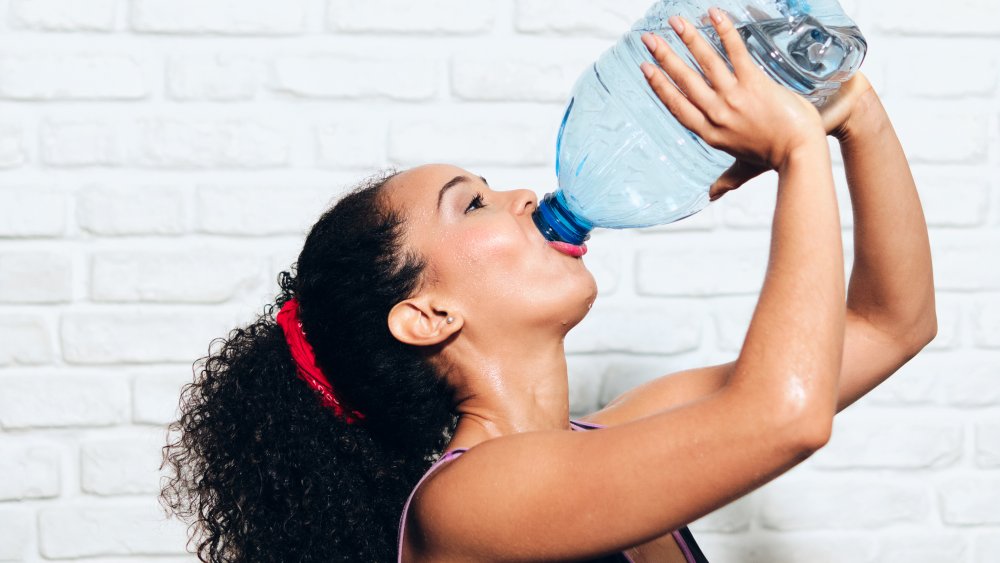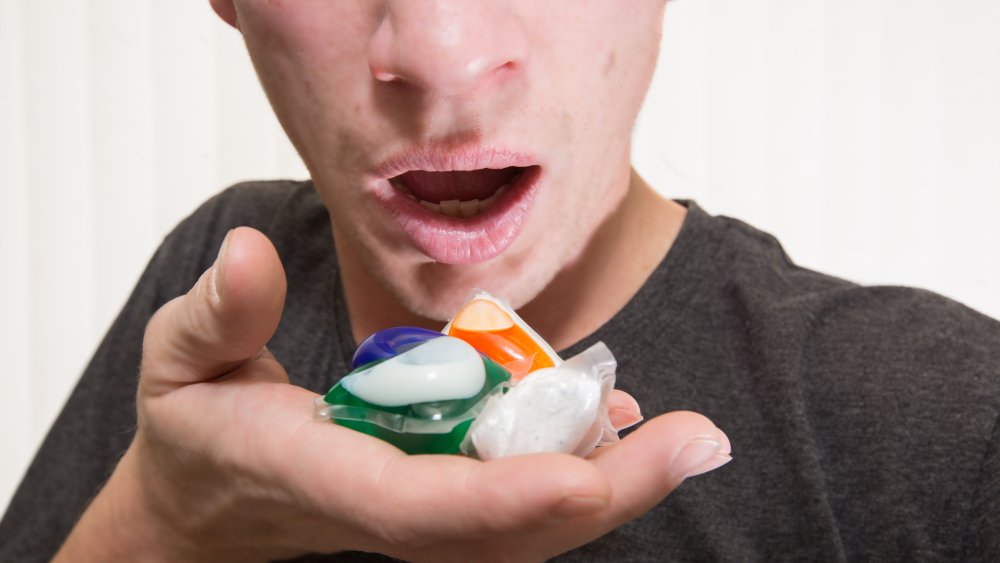The Most Dangerous Food Challenges Ever
People do dumb stuff. That seems to be the consensus when it comes to dangerous food challenges. Hopefully you're just reading this because you like to remind yourself periodically that there are plenty of people out there who do much dumber stuff than you do. And not because you're looking for some inspiration for how to spend your evening, or for fun activity ideas for your kid's birthday party.
Because no matter how much you like food, and no matter how much you like challenges, these particular food challenges come with more risk than they're worth. Especially considering that none of them even involve anything delicious, and that when they result in a food coma, it's not the ha-ha-ha-I'm-so-stuffed kind — it's the literal kind.
So, read on to cringe, or to savor some schadenfreude if that's your thing, or, more importantly, to pick up on some internet trends you should probably warn your kids and your Johnny Knoxville-idolizing brother about... but don't try any of this at home.
The Cinnamon Challenge proves too much of a good thing isn't so good
Some ingredients are food additives — and not eaten straight — for a reason. The beloved spice we call cinnamon falls into this category. But that hasn't stopped hundreds of thousands of people, including celebrities, from attempting The Cinnamon Challenge and uploading their ridiculousness to YouTube. The dare is simple: Swallow a tablespoon of ground cinnamon without the help of any liquid. But it's a lot more dangerous than it sounds.
It's also basically impossible. Cinnamon is water-resistant dried tree bark, so it doesn't dissolve in saliva (which you typically have less than 1 tablespoon of in your mouth). Once your body realizes your mouth is essentially waterproof and full of powder, it panics and acts to expel it. Hence all the coughing, gagging, dry heaving, and spewing a cloud of cinnamon into the air.
But the real risks lie with inhaling that cloud of cinnamon powder into your lungs. On top of the burning throughout the respiratory tract, choking, labored breathing, and vomiting that may result, there are even greater dangers because cinnamon is made of cellulose, which doesn't really break down. This can lead to inflammation and scarring in the lungs, thickening of lung tissue, pneumonia or other infections, collapsed lung, and other potentially permanent lung damage. And healthy lungs are so nice to have. Inhalation of cinnamon powder can even result in death by asphyxiation.
21 at 21 is a drinking challenge that should be avoided
Yes, this article about food challenges has an entry about alcohol. Either accept that "food" is widely understood to encompass food and drink, or that the sort of people who consider alcohol a food are also the sort who should be warned about the dangers of 21 at 21.
In America, an estimated four of five young adults celebrate reaching the legal drinking age by drinking. As many as 34 percent of those who are male college students and 24 percent who are female college students drink — or at least attempt to drink — 21 alcoholic beverages to mark turning 21 (via The New York Times). That's where the game gets its name: striving to imbibe 21 drinks on your 21st birthday.
That's too much. Most people can't stay conscious long enough to consume that many drinks. As the University of Kansas notes, 21 shots of standard liquor in four hours gives a 150-pound person a blood alcohol content (BAC) level around .42 percent, while unconsciousness typically sets in around .30. People who manage to get their BAC to 0.30 or higher are likely to experience potentially life-threatening symptoms like accelerated heart rate and distressed breathing, and hitting .40 and up can trigger a coma and death due to stopped breathing or heartbeat, according to American Addiction Centers.
Avoid alcohol poisoning and possible death by not taking the 21 at 21 challenge, even with beer or wine.
The Soy Sauce Challenge is not as tasty as it seems
It's one thing to thoroughly saturate your sushi with soy sauce. The worst you've done is obscured its delicate flavors, and perhaps offended the equally delicate sensibilities of your sushi chef. It's another thing to saturate your bloodstream with salt by taking on The Soy Sauce Challenge, which dares you to drink a bottle of this high-sodium condiment. This dangerous endeavor has also made the rounds online and caused devastating effects as a hoax colon cleanse.
The main danger of chugging lots of soy sauce is inducing hypernatremia, or too much sodium in the blood. Basically, it's salt poisoning. The salt draws water from your brain and other bodily tissue through osmosis, potentially causing them to shrivel and bleed. This can trigger seizures, coma, and usually permanent brain damage or other neurological complications (via Fox News). Salt overdose can also be deadly, and it's even a documented method of suicide in some Asian countries.
Intake of anywhere from 0.75 to 3 grams of salt per about two pounds of body weight can be fatal, and one tablespoon of salt weighs 15 grams, notes NPR. If you're not into math, that means as little as around four tablespoons of salt could kill someone who weighs 160 pounds. With the average soy sauce delivering 61 percent of your recommended daily sodium intake in a single tablespoon, you obviously don't want to down a whole bottle of it.
The Salt and Ice Challenge promises you'll burn
This entry doesn't involve eating or drinking, but it involves a seasoning and frozen water, so it counts. We make the rules. The Salt and Ice Challenge, popularized via YouTube videos and social media (as all idiotic challenges are these days), entails pouring salt on your skin and pressing an ice cube down on it for as long as you can tolerate the excruciating pain.
If you're not all that sciencey, or if you've never made your own frozen treat in a hand-cranked ice cream maker, you might wonder, "Why the salt?" Basically, it lowers the ice's temperature from about 32 degrees to around 1 degree Fahrenheit. This prevents it from melting as quickly as it would otherwise when pressed against the cozy warmth of human skin, and it also transforms the ice cube from something that causes mild discomfort, redness, and numbing into something that can cause burn-like injuries or frostbite within minutes of contact.
This is no exaggeration; the Salt and Ice Challenge can inflict first, second, or third degree burns, even potentially damaging tissue beneath the skin. The resulting blistering can be quite dramatic — not to mention painful, slow to heal, and prone to infection. The injuries can also lead to permanent bald patches in the affected area or even require skin grafts. Generally speaking, when something causes severe acute pain, it's better not to do it.
Vodka eyeballing doesn't mean estimating its quantity by sight
If prying your lower eyelid away from your face and pouring a shot of vodka onto your eyeball and into your eye socket sounds unpleasant enough to keep you from doing it, you've got good instincts. Better instincts than some of the young folks at colleges and on YouTube, and better than Eyeball Paul, a character in the awful British comedy flick Kevin & Perry Go Large.
The premise for this absurd practice — which is believed to have originated among Las Vegas nightclub waitresses who did it for bigger tips — is that it gets you more drunk, faster, because the alcohol is absorbed quickly into the bloodstream via mucous membranes. Because pounding shots the traditional way works far too slowly. Unfortunately for vodka eyeballing enthusiasts, though, this simply isn't true. As the American Academy of Ophthalmology explains, the amount of vodka that gets absorbed is negligible. The AAO condemns vodka eyeballing, and it's always good policy to eschew that which the AAO strongly opposes.
Not only will it not get you inebriated any faster, and not only will it burn and totally suck, vodka eyeballing can cause serious eye injuries. It's described as having "corrosive effects on the eye," and that phrase alone should be enough to make anyone skip this stupid, dangerous challenge. It can leave abrasions and scarring on the cornea, lead to ocular infections, and even cause impaired vision or blindness.
The Chubby Bunny isn't as cute as it sounds
Aww, it sounds downright adorable, doesn't it? Well, the food challenge known as Chubby Bunny can turn deadly in the twitch of a bewhiskered nose — and that applies to both children and adults who play. Chubby Bunny appears in a variety of contexts, like at kids' events, as a hazing game, around campfires, as an ice-breaking exercise, and so on, and it's been responsible for at least two deaths by asphyxiation. So, while complications are rare, they're pretty serious.
There are some minor variations, but the game's basic idea is for competitors to see who can stuff the most marshmallows into their mouth without chewing or swallowing them and still coherently say the phrase "chubby bunny." Spitting out the marshmallows, coughing, gagging, puking, or otherwise showing physical signs of defeat mean you're out. Presumably, so too does inhaling a marshmallow into your throat or trachea and obstructing the flow of oxygen into your lungs.
Does this mean you shouldn't play Chubby Bunny? After all, any food challenge or competitive eating event that involves stuffing food into your face is a potential choking hazard. If, for some reason, you're determined to attempt this half-cute, half-revolting game, you can greatly reduce the risk of choking deaths by having a gifted administrator of the Heimlich maneuver on hand. And never let children play without close, constant adult supervision. Or you know... just don't do it.
Reap what you sow with The Carolina Reaper Challenge
Eating super-spicy peppers and hot sauces is a popular food challenge genre. People enjoy watching loved ones bounce around, yelping, tongues hanging out, red-faced and guzzling liquids. But as the drive to achieve more heat and horticultural sciences evolve, so too do peppers, and new ones keep being bred to be the hottest ever. This adds danger to pepper-eating challenges — particularly where The Carolina Reaper Challenge is concerned.
The Carolina Reaper is the hottest edible chili pepper in the world, measuring 2.2 million Scoville Heat Units (SHUs), which quantifies spiciness by capsaicin levels (capsaicin being the compound that gives peppers their heat). It was surpassed by the Dragon's Breath pepper, but at nearly 2.5 million SHUs, it's never been eaten and can reasonably be expected to prompt anaphylactic shock and kill you if you consume it.
Along with intense pain and burning in your mouth and digestive tract, eating a Carolina Reaper can cause difficulty breathing, possibly asthma attacks, vomiting, dehydration, seizures, hours of debilitating heartburn, and more. It can also trigger thunderclap headaches, which come on so suddenly and are so intense they can — and should — send you to the emergency room.
There's also The Ghost Pepper Challenge. Ghost peppers were formerly the world's hottest, but at around 1 million SHUs, they're not as hot as Carolina Reapers. Still, they can cause the damage mentioned above, and they've even nearly killed someone by burning a 1-inch hole in his esophagus.
You might not guess how dangerous The Gallon Challenge is
Not all dangerous food challenges involve eating or drinking weird things, spicy stuff, or ingredients not typically consumed alone. Sometimes, it's normal stuff at crazy quantities. Case in point: The Gallon Challenge, which urges people to down a gallon of water or a gallon of milk — usually in under an hour.
Responsible parties will tell you to limit water intake to around one liter per hour, and that sucking down three to four liters (a gallon is a little less than four liters) within a few hours puts you at risk of water intoxication. Yeah, that's a thing, and it can kill you. It dilutes the sodium in your blood, causing hyponatremia (the opposite of a condition we discussed earlier pertaining to The Soy Sauce Challenge), which leads to brain swelling. Symptoms may include severe headache, nausea, vomiting, muscle weakness, respiratory arrest, seizures, coma, and death.
Milk presents some other problems. Trying to quickly finish a gallon should cause extreme gastrointestinal discomfort, diarrhea, and/or vomiting. You're unlikely to have enough of the digestive enzyme lactase to handle this massive load of lactose, essentially becoming lactose-intolerant during the challenge. You're also consuming as much calcium as 25 standard calcium-based antacids, which throws your stomach acid way out of whack. And then there's the absurd quantity of casein (one of milk's proteins), which reacts with your stomach acid and leaves you with a sickening belly full of curds.
The Tide Pod Challenge won't wash your innards, but it'll burn them
Let's wrap up with a challenge that doesn't involve food, but it does involve eating something. The Tide Pod Challenge — which consists of eating, biting into, or cooking and chewing these petite packets of laundry detergent — is big, dumb, and dangerous enough to warrant inclusion. In just the first half of January 2018, when this foolish fad was gaining traction, poison control centers handled dozens of cases involving deliberate exposure to the capsules' contents. And that's not even counting hospitals.
One of the simpler, safer rules to abide by as we make our way through these lives of ours is, "Don't eat things that aren't food." And Tide Pods are not food.
They're a caustic poison. When you bite them, they tend to explode and cause severe chemical burns in your mouth, throat, esophagus, and maybe further down your digestive or respiratory tract. If you don't puncture the pod, the outside is water-soluble, designed to dissolve in the laundry, which means it dissolves in saliva, too. Tide Pods are also coated in a bitter substance that can trigger sharp inhalation, posing a choking hazard — a risk that can also result from swelling in your airway in reaction to the toxin. And if you swallow enough detergent, it can lead to not-so-fun complications like bleeding ulcers, narrowing of the esophagus that requires surgical correction, and death (via Cosmopolitan).
